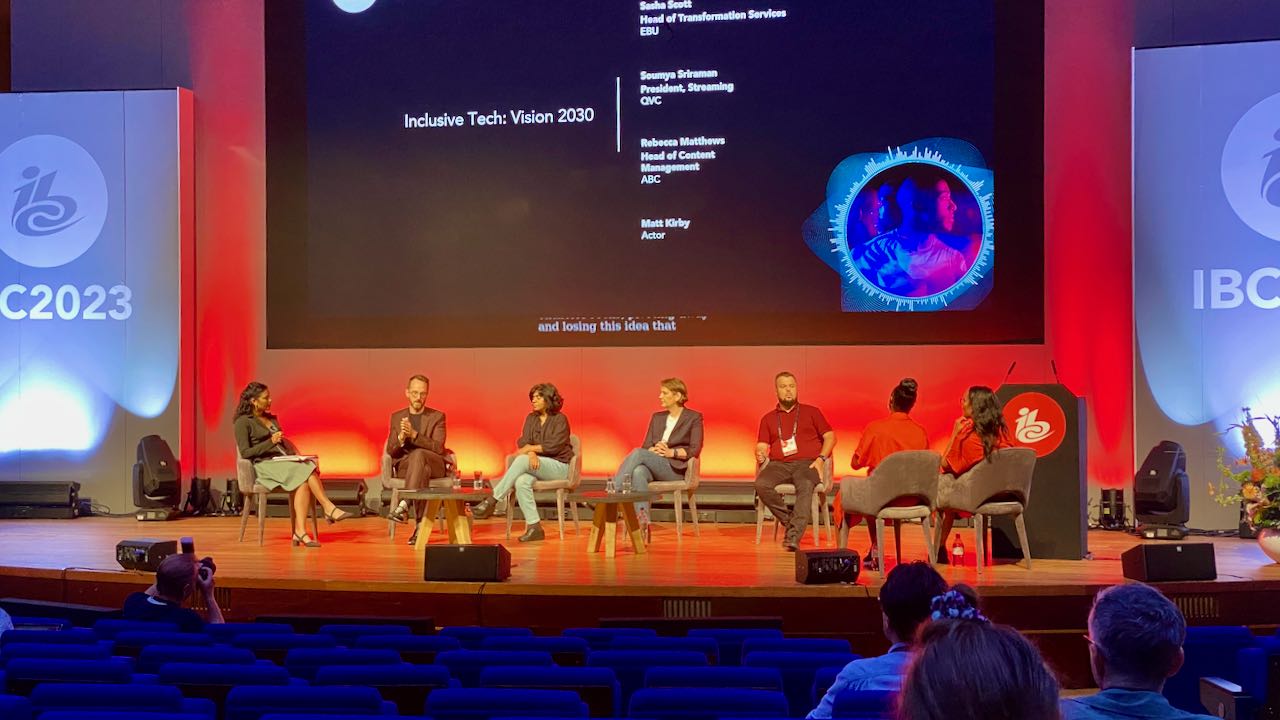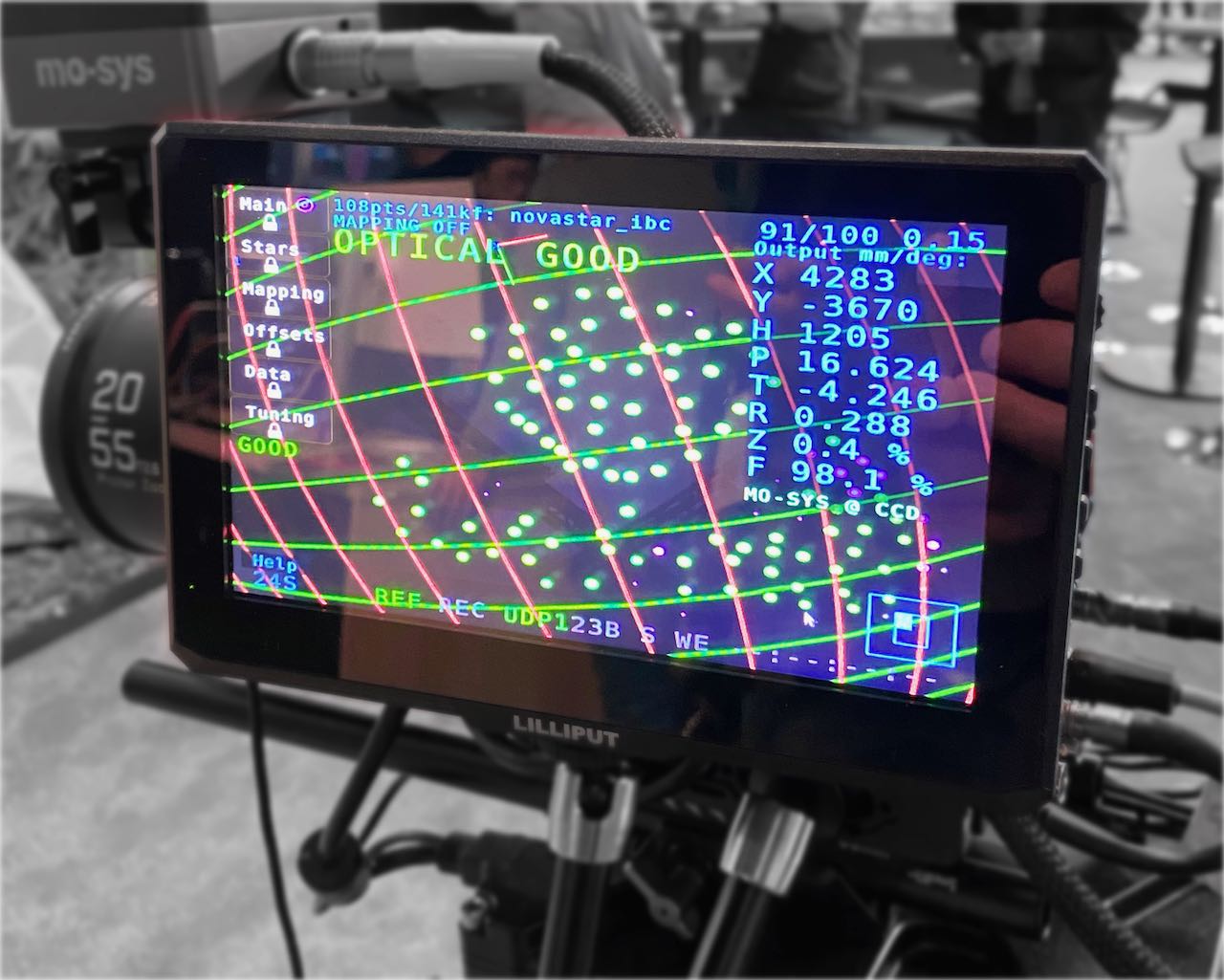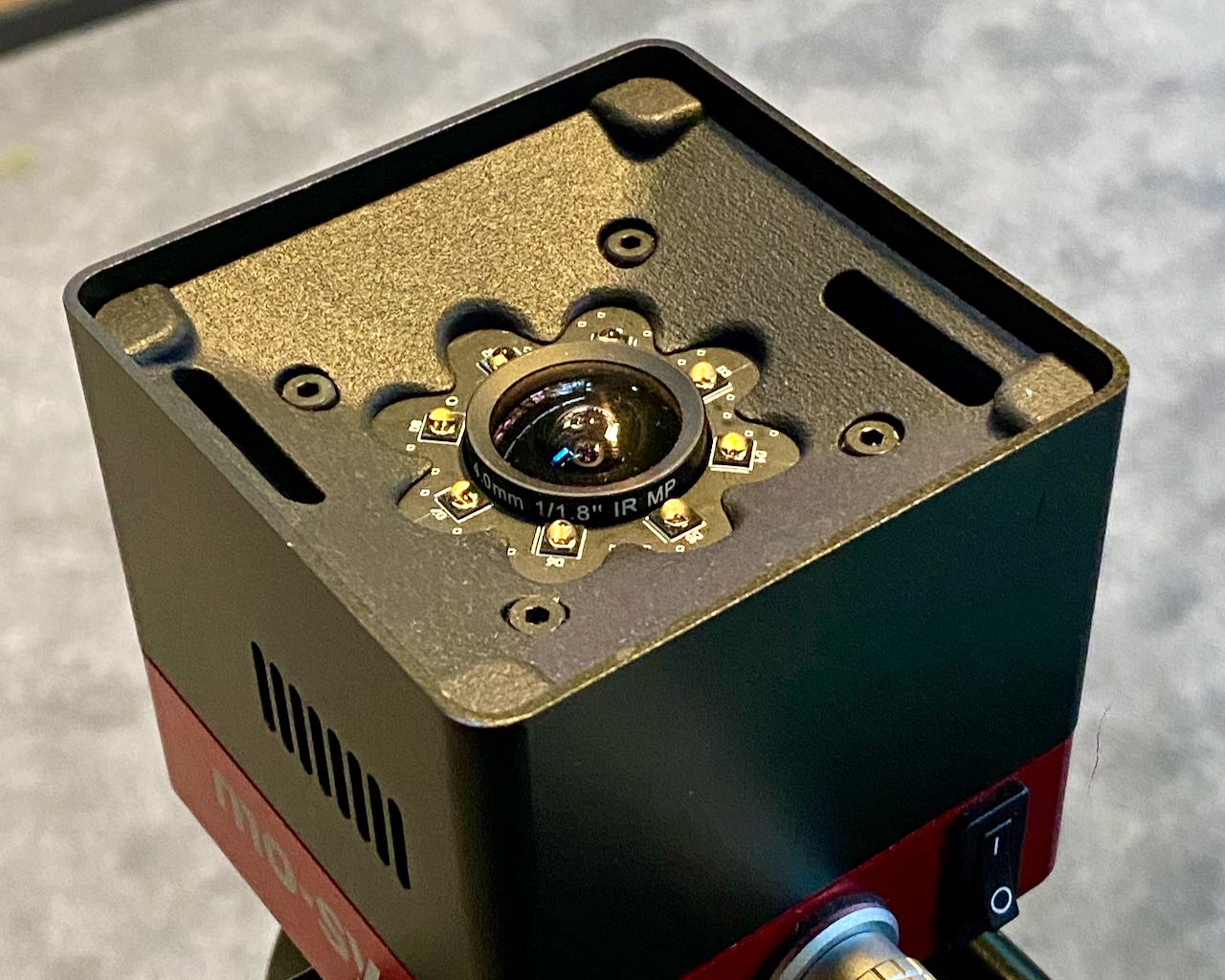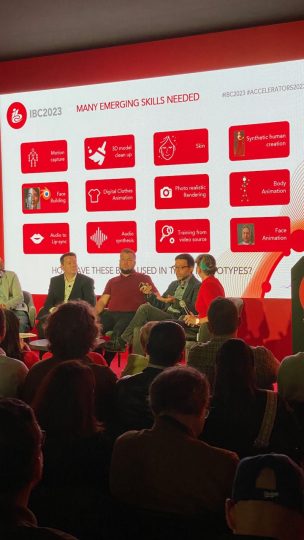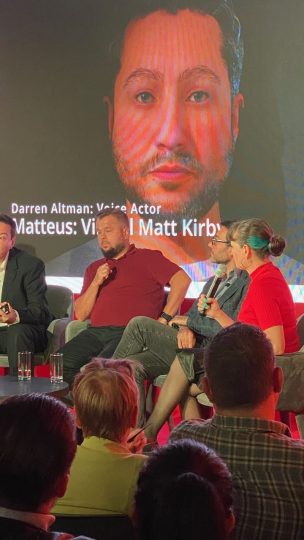Unleashing synthetic humans & AI in corporate video production
My key takeaways from Amsterdam's IBC 2023
In September 2023 I attended the IBC trade show after a pause of four years. As a video producer, I always appreciate the opportunity to network, explore new technology, and stay updated on industry trends. This year, I decided to focus more on the extensive accompanying program, which included symposia, presentations, and panel discussions covering a wide range of topics.
I was particularly interested in AI, virtual production, inclusivity, and sustainability.
The events were of high quality, although discussions on topics like AI and synthetic humans remained somewhat superficial. Nonetheless, I found the experience inspiring and thought-provoking.
I also made sure to visit company booths related to those topics to ask questions and see the technology in action. So here comes in a nutshell, what I have explored at IBC.
Inclusive Tech Visions 2030
A Change-maker Panel Discussion
The panel discussion on ‘Inclusive Tech: Vision 2030’ was a standout event at IBC. Moderated by Nadira Tudor, it featured esteemed panelists including Rebecca Matthews, Head of Content Management at ABC, Matt Kirby, an actor and sign language translator, Sasha Scott, Head of Transformation Services at EBU, and Soumya Sriraman, President of Streaming at Qurate Retail Group. The discussion delved into the future of inclusive technology and its impact on the media industry, offering valuable insights and sparking curiosity.
The rapid evolution of technology is reshaping the global media landscape, and as a video producer and storyteller, these changes deeply resonate with me.
How can we all keep pace with this transformation? How can we ensure that accessibility becomes a universal reality? And what role will AI play in creating media formats that are inclusive for all? These are pressing questions that demand our attention.
Numerous topics need to be addressed, from establishing production standards for audio descriptions to finding alternatives for areas with limited internet access and designing customizable user interfaces for media platforms.
However, actual progress can only be achieved when underrepresented minorities and disadvantaged individuals have a seat at the decision-making table. Unfortunately, the current reality in many places falls short of this ideal.
Emerging: Virtual Production Sets
The days of the blue and green screen are numbered. Virtual production systems are gaining in importance. More and more coordinated production environments, more powerful technology, and producers for back-plates are coming onto the market.
A virtual production set for video refers to a digital environment where video content is created using computer-generated imagery (CGI) and virtual reality (VR) technologies. It allows filmmakers to simulate real-world settings and capture footage in a virtual space, offering flexibility and creative possibilities in the production process.
Using a virtual production set offers several advantages. It provides greater flexibility and control over the environment, allowing for quick changes and adjustments. It can save time and costs by reducing the need for physical sets and location scouting. Additionally, it enables real-time visualization, collaboration, and integration of CGI elements, enhancing the overall creative process.
I find the “Ghost-Frame” technology intriguing. By synchronizing time and utilizing high-speed cameras, it allows for the recording of up to nine camera perspectives simultaneously against interchangeable backgrounds, resulting in dynamic and versatile footage.
Here time-synced high-speed cameras split flick projections with up to 450 frames per second so that up to nine camera perspectives can be recorded against one single background at once.
Mind-blowing.
Synthetic Humans In Broadcasting
Synthetic humans in media refer to artificially created beings that resemble humans in appearance and behavior. Not only since the strike of writers and actors in Hollywood, the creation of synthetic humans is a topic that divides opinions.
The ethical implications of creating synthetic humans are complex and multifaceted.
They raise questions about the nature of consciousness, personhood, and the potential exploitation or mistreatment of these beings. Additionally, concerns about social inequality, discrimination, and the impact on human relationships and societal norms come into play.
Creating synthetic humans carries several potential risks and dangers. These include the potential for misuse or abuse of these beings for unethical purposes, such as slavery or warfare. There is also the risk of unintended consequences, such as the loss of human jobs or the erosion of human empathy and social connections. Additionally, if synthetic humans were to gain autonomy or consciousness, questions about their rights and treatment would arise.
The following were represented as experts: Michael Davey, Freelance Technology Consultant – MD Consultancy, Clive Santamaria, Chief Architect – ITV, ErinRose Widner, Global Head, Business Strategy Emerging & Creative Technologies | Media & Entertainment – Verizon Business Group, Roberto Iacoviello, Lead Research Engineer – RAI, and Muki Kulhan, Innovation Co-Lead – IBC Accelerators.
So what are the potential benefits?
Synthetic humans could be used to perform dangerous or repetitive tasks, reducing risks to human life. Synthetic humans could also advance scientific research and exploration, as they may possess enhanced physical or cognitive abilities. Additionally, they could provide companionship and support to individuals who are lonely or in need of assistance.
The involvement of AI in various steps of the workflow was also mentioned, and the potential impact on the media professional community.
So ErinRose Widner, the Global Head of Business Strategy for Emerging and Creative Technologies at Verizon Business Group, highlighted that this process not only involves AI but also serves as a job generator for the media pros. The topic is on the agenda. I’m curious to see what happens next.
The experts mentioned are discussing the readiness of these technologies and the ongoing optimization of workflows.
Roberto Iacoviello, Lead Research Engineer – RAI, talked about a low-budget project that brought Maria Callas “to life“. The goal here has been testing and refining the process of creating synthetic humans. Tweaking the final visuals would be something to work on in the future.
Direct-To-Consumer Film Distribution With Web 3.0
Prof. Feida Zhu from Management University in Singapore focuses on researching AI and collaborative intelligence, Web 3, blockchain, data asset, and AI governance, with a specific emphasis on their application in business, finance, and consumer innovation. He presented a groundbreaking application at IBC23 that enables “Direct-to-Consumer Models” for filmmakers and digital artists. This innovation allows filmmakers to release their work directly to their audience, bypassing traditional B2B intermediaries.
The application also includes a feedback loop mechanism for viewers to provide direct reactions, providing filmmakers with valuable audience insights.
Additional features such as dynamic pricing, copy protection, customizable UI, branding, tokenization, and digital merchandising are expected to be added.
While this solution appears to be more advanced than platforms like Vimeo-On-Demand, its practical success is yet to be determined. In principle, however, exciting.
AI In Broadcasting
At IBC, AI was a popular topic of conversation, with a panel discussion featuring Radu Orghidan, Phani Kolaraja, Stuart Huke, and moderated by Colin Dixon, discussing the pros and cons.
Artificial Intelligence (AI) has revolutionized various industries, and broadcasting and media production are no exceptions.
With its ability to analyze vast amounts of data and perform complex tasks, AI has brought numerous benefits to the field.
However, it is crucial to acknowledge the potential dangerous impacts that AI can have.
To get everyone on the same page I will list up five examples of the benefits of AI in broadcasting and media production, as well as five potential dangerous impacts.
Benefits:
-
Enhanced Personalization:
AI algorithms can analyze user preferences and viewing habits to deliver personalized content recommendations, improving user experience and engagement. -
Automated Content Creation:
AI-powered tools can generate content, such as news articles or sports reports, by analyzing data and creating narratives, saving time and resources for media organizations. -
Efficient Video Editing:
AI can automate video editing tasks, such as scene detection, object tracking, and even generating highlight reels, streamlining the production process and reducing manual labor. -
Real-time Transcription and Translation:
AI-based speech recognition and translation technologies can transcribe and translate live broadcasts, making content accessible to a wider audience and facilitating global communication. -
Improved Content Moderation:
AI algorithms can analyze and flag inappropriate or harmful content, helping media platforms maintain a safe and responsible environment for users.
Potential Dangerous Impacts:
-
Spread of Misinformation:
AI can be exploited to generate deepfake videos or manipulate images, potentially leading to the spread of misinformation and fake news, eroding trust in media. -
Loss of Human Jobs:
As AI automates various tasks, there is a concern that it may lead to job displacement for human workers in the broadcasting and media production industry. -
Algorithmic Bias:
AI algorithms can inadvertently perpetuate biases present in the data they are trained on, leading to biased content recommendations or unfair representation in media. -
Privacy Concerns:
AI systems often rely on collecting and analyzing user data, raising concerns about privacy and data security in broadcasting and media production. -
Ethical Dilemmas:
The use of AI in media production raises ethical questions, such as the responsibility for the content generated by AI systems and the potential for AI to be used for surveillance or propaganda purposes.
Conclusion
Artificial Intelligence has undoubtedly transformed broadcasting and media production, offering numerous benefits such as enhanced personalization, automated content creation, and improved content moderation. However, it is crucial to address the potential dangerous impacts, including the spread of misinformation, job displacement, algorithmic bias, privacy concerns, and ethical dilemmas. Striking a balance between harnessing the benefits of AI and mitigating its risks is essential for the future of broadcasting and media production.
My personal take on this topic (so far):
It’s clear that the arrival of Generative AI in the media world raises important questions about ethics and privacy. We need political and legal regulations to ensure the ethical use of data and protect individuals from potentially harmful content generated by AI.
***
Please feel free to ask questions or comment at any time. Thank you for your interest. Please share this post if you find it useful or interesting to others.


